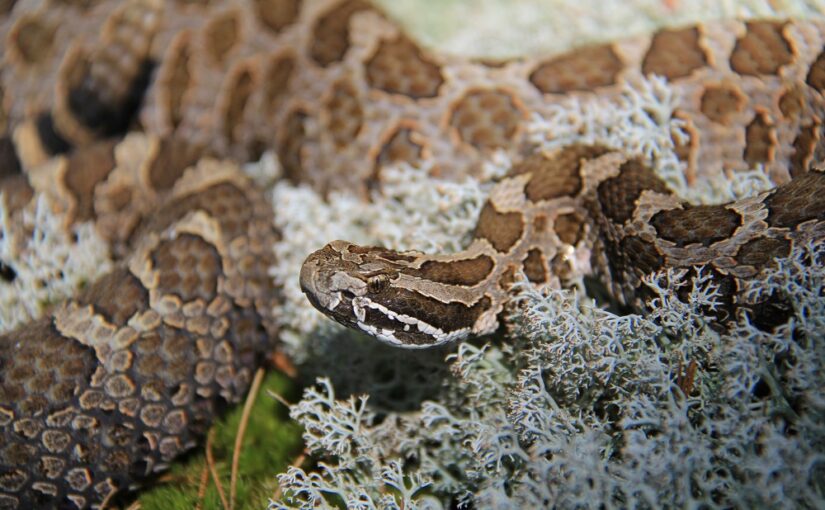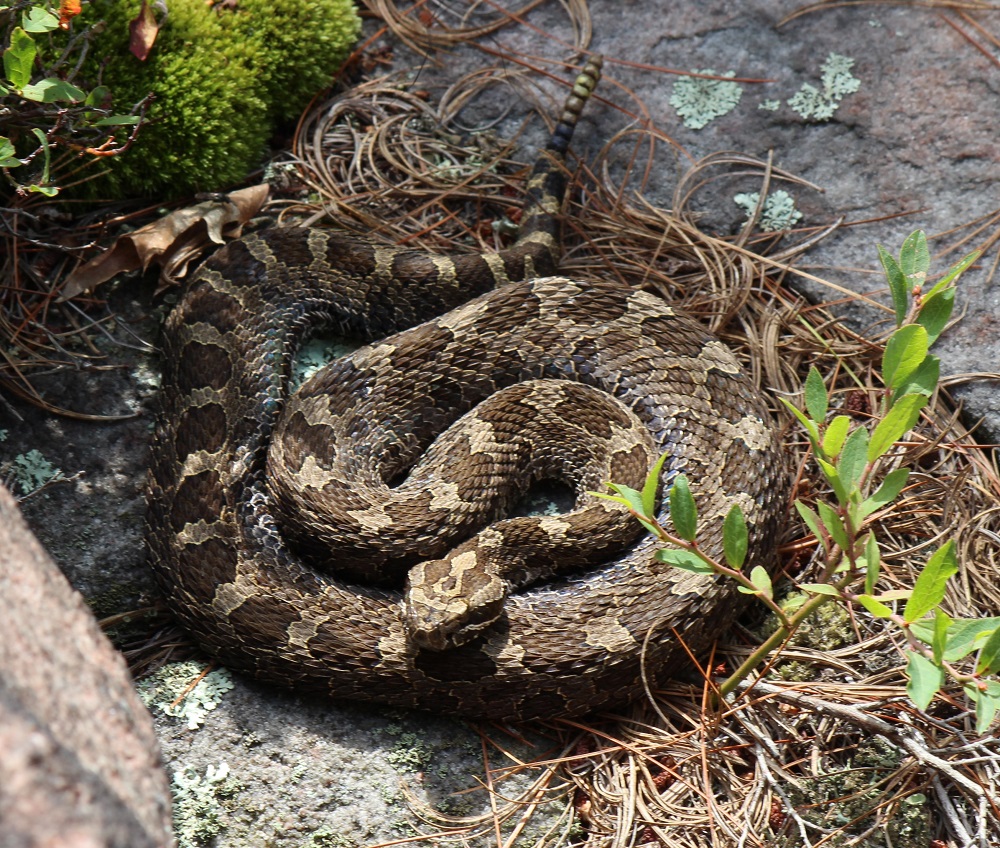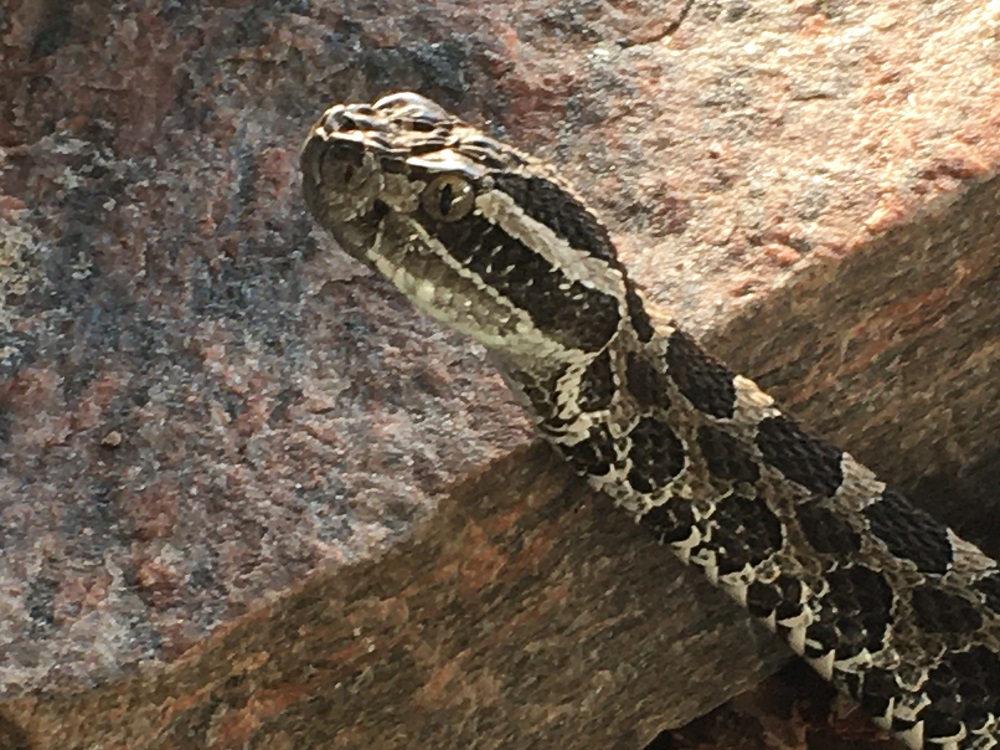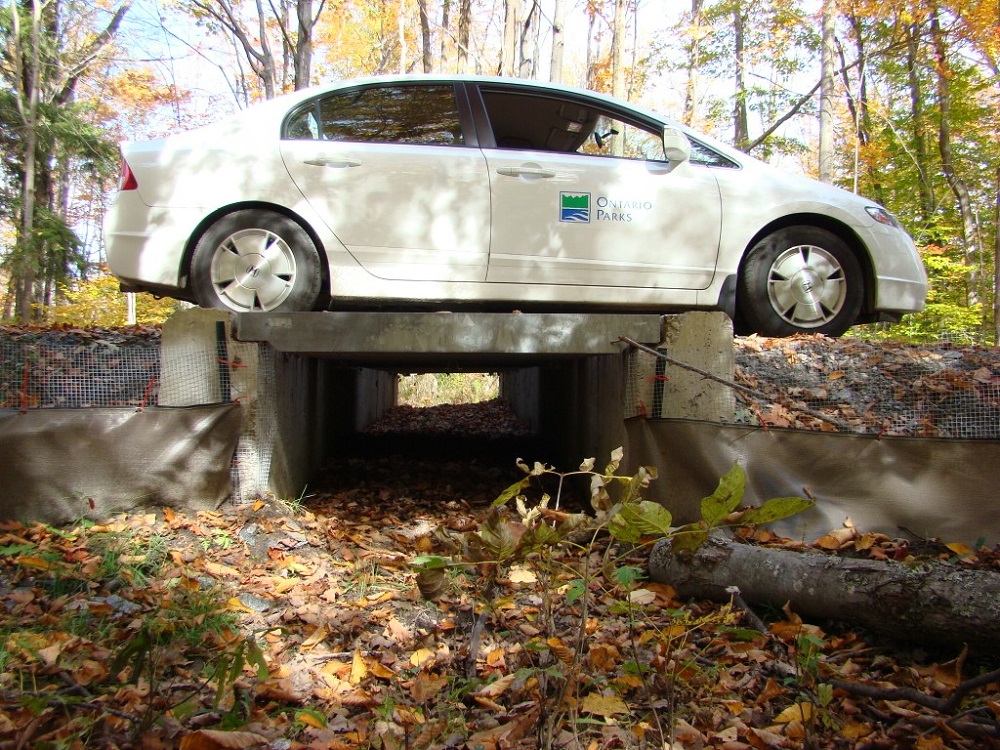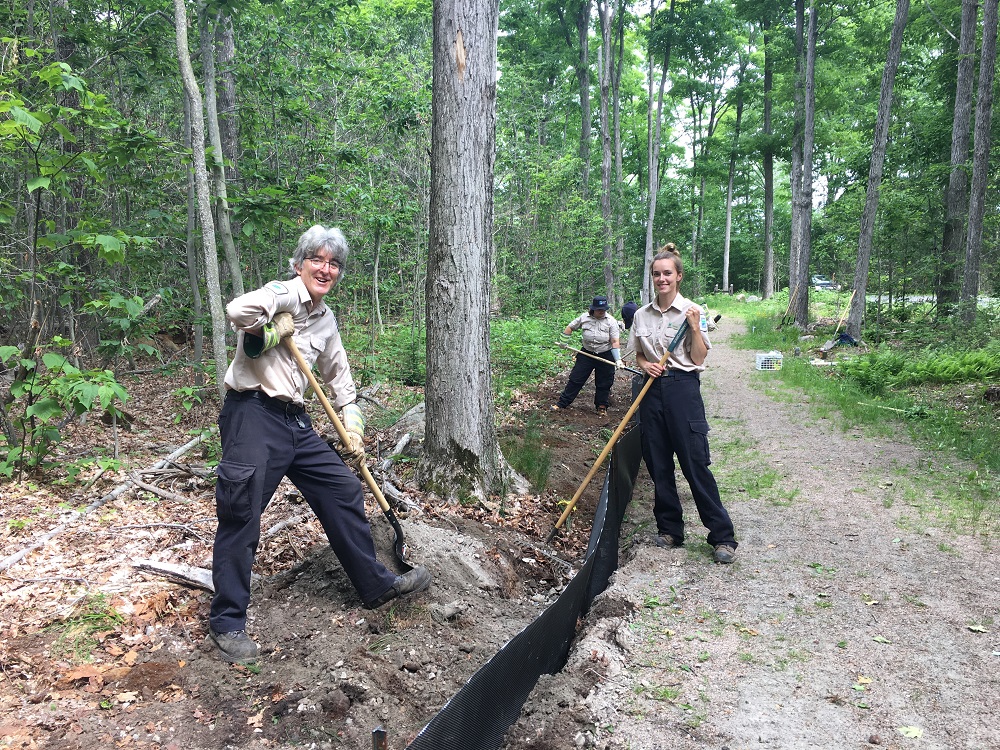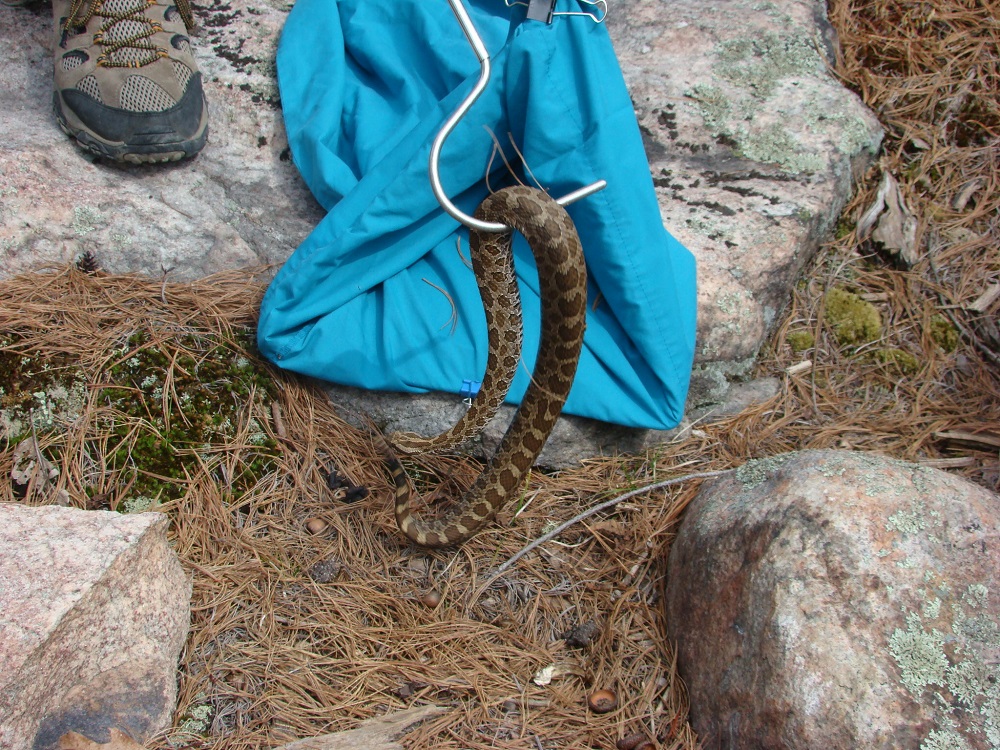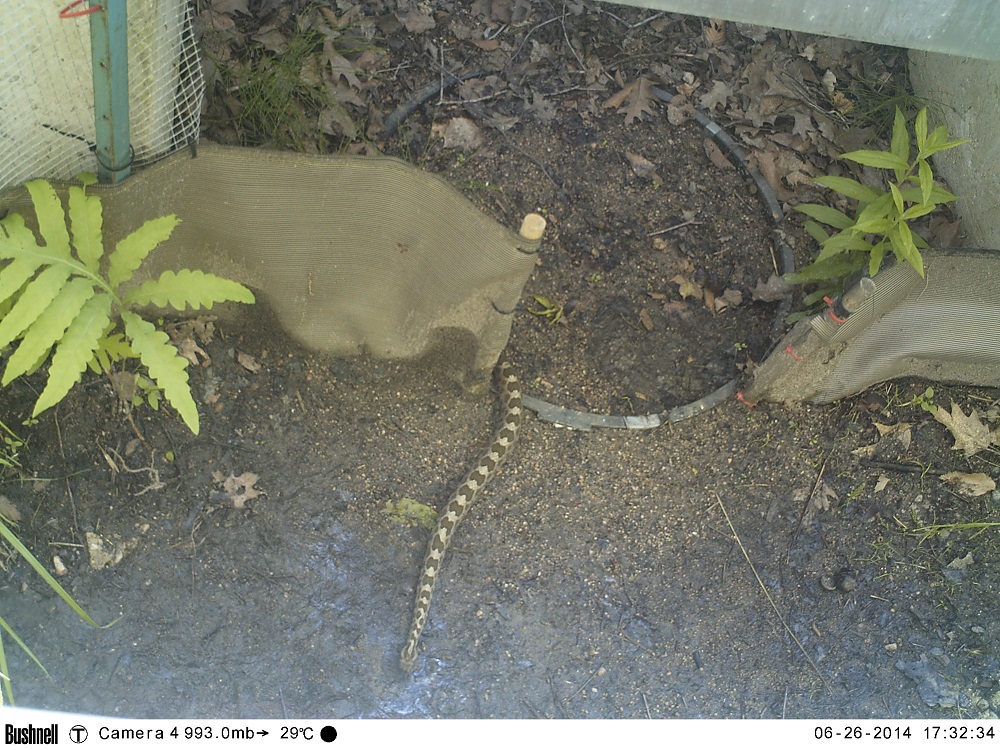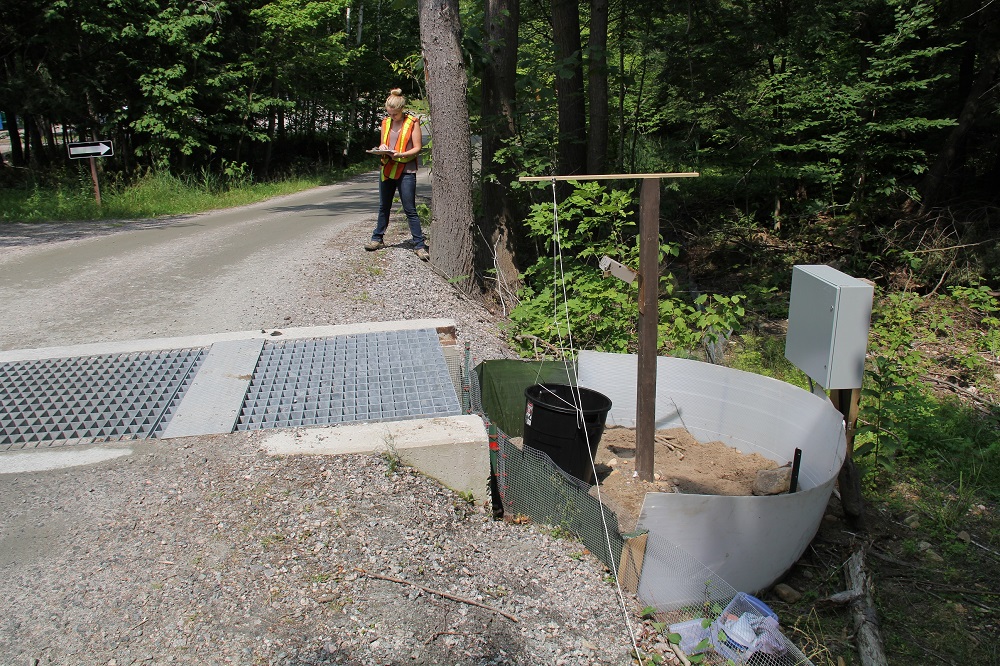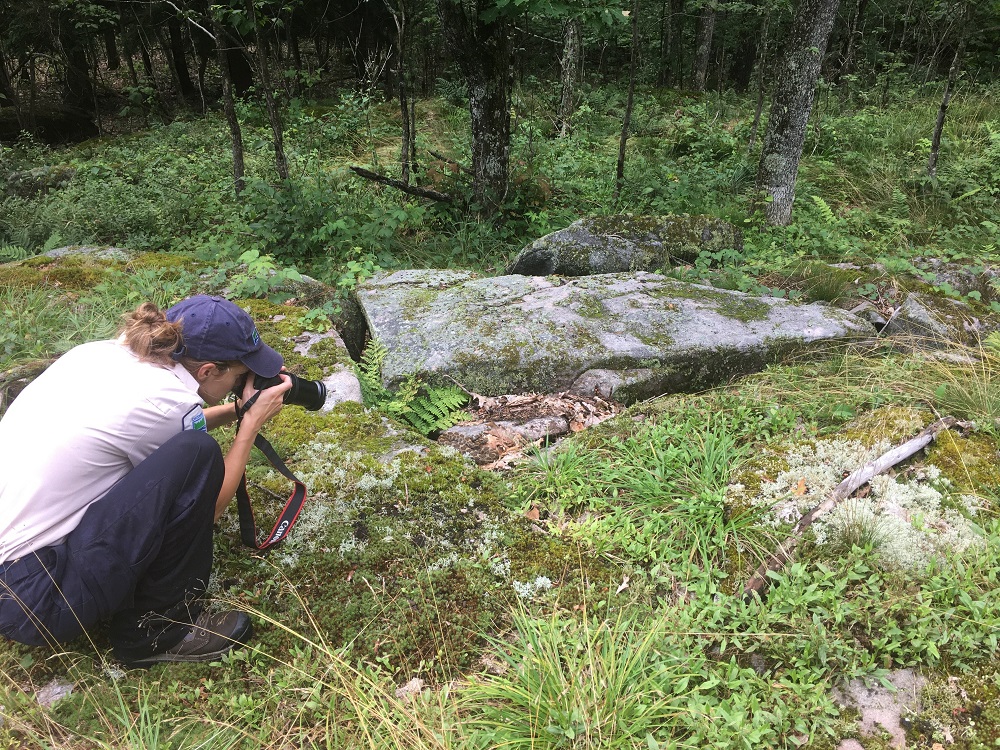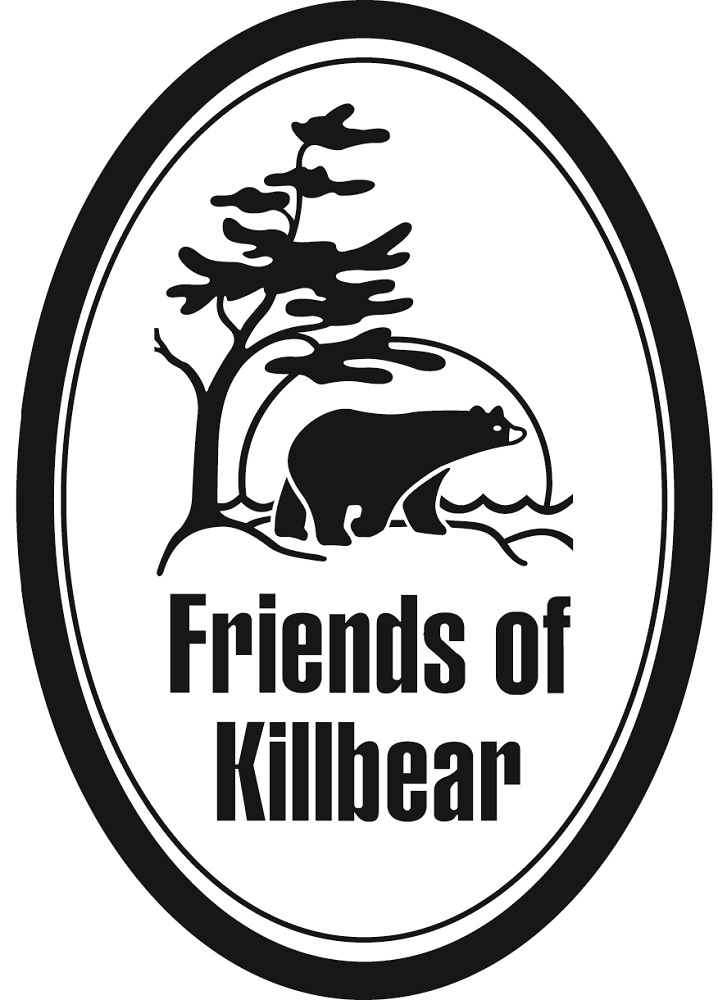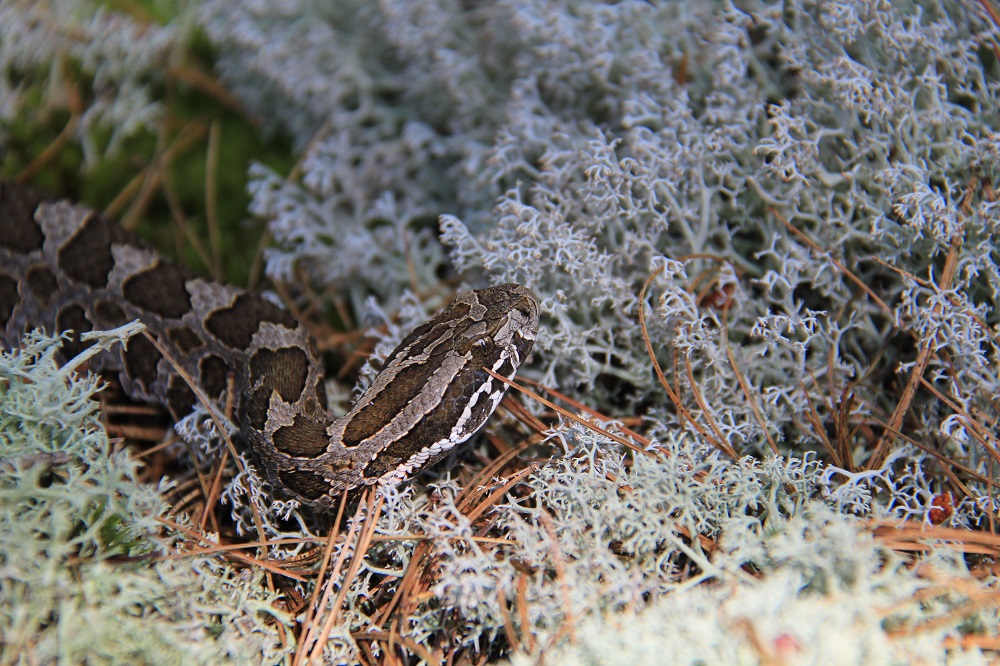Today’s post comes from Killbear Provincial Park‘s Senior Park Naturalist Isabelle Moy.
Here at Killbear, it’s no secret that we’re home to Ontario’s only species of venomous snake: the Massasauga Rattlesnake.
From our “Please brake for snakes” signs to daily Snake Talks to naturalists telling visitors that if they see a snake to call the park, you can tell we aren’t trying to hide all the cool work we do to protect this unique species-at-risk.
A bit about the Massasauga Rattlesnake
For those of you who are unfamiliar with the Massasauga, they are a small-bodied pit viper.
This snake has a thick body and is relatively short in length, often becoming no more than 3 feet long.
They can be distinguished from other snake species at Killbear by the distinct bowtie-shaped blotches down their back and striped head, along with the rattle on the end of their tail, of course!
As a pit viper species, the Massasauga uses some super cool adaptations to hunt prey. First, they are an ambush predator, often preferring to wait hidden in one spot for prey like a mouse to pass by them, rather than actively searching for prey around the park.
Second, the Massasauga has heat-sensing pits on the sides of their face that allow them to see the heat signatures of animals around them (think heat-vision goggles on your cheeks).
These help them to sense prey easily.
While these snakes are venomous and you should seek medical attention if bitten, they are a shy species and don’t want to be bothered by humans, so the likelihood of being bitten is very low.
Plus, they come with a built in “you’re too close to me and I’m stressed out!” warning – the rattle on the end of their tail.
If you hear that rattle buzzing, remember to give that snake some personal space!
Why did the rattlesnake cross the road?
In 2005 and 2006, our team at Killbear noticed a very high level of road mortality among rattlesnakes at Killbear.
We were finding many individual snakes dead on roads, often hit by visitor’s cars as they drove through the park.
Something needed to be done!
Even snakes need to learn to cross the road safely!
To help the rattlesnakes out, we installed four ecopassages on two busy roads in the park, the Blind Bay Campground road and the day use road.
These passages act like a corridor under the road and allow rattlesnakes to cross to the opposite side safely.
In order to make sure that the snakes don’t try to cross the road at a place without an ecopassage, our team at Killbear also installed short fences that run along the length of the roads.
Together, the exclusion fencing directs snakes to the ecopassages and the ecopassages provide a path that our rattlesnakes can use to get across without being hit on the road.
But do they work?
A second opinion
In 2013 and 2014, a Master’s student from Laurentian University came to Killbear and studied the effectiveness of our ecopassages to find out if they were, in fact, helping our rattlesnakes.
He began by microchipping individual rattlesnakes in the park, then setting up chip-readers on either side of the ecopassages. This would tell him when a snake had used each ecopassage.
Wildlife cameras were installed at the entrances to the ecopassages so that he could see which, if any, animals were using them.
The researcher spent lots of time biking the roads in and around the park looking for any dead rattlesnakes that had been hit by cars and responding to reports of snakes in the park from visitors.
After two years of research, these were his conclusions:
- The fences were working to keep the snakes off of the road and the ecopassages allowed the snakes to safely cross the roads
- Without the installation of the fences and ecopassages, our rattlesnake populations would have disappeared within 20 years
- Not only were rattlesnakes using the ecopassages, but there was evidence of other snakes, turtles, salamanders, and even small mammals using the ecopassages too!
This is great news for Killbear’s rattlesnakes!
What’s happening now?
Today at Killbear, we are still monitoring our rattlesnake population and ensuring that the ecopassages continue to work effectively.
Throughout the year, you may see staff working hard to repair or install the exclusion fencing along the roads with ecopassages.
During the summer months when rattlesnakes are active, Discovery staff survey park roads and walk the fencing looking for rattlesnakes in and around the park.
We also respond to reports of rattlesnake sightings from park visitors and relocate snakes found on roads or campsites to safer locations.
Staff continue to teach Killbear visitors about rattlesnakes, how important they are, and what the park is doing to protect them.
Next time you visit Killbear, come to our Discovery Centre and meet our species-at-risk ambassador, Rita the Rattlesnake!
Many thanks to our friends!
We can’t talk about our efforts to protect the Massasauga Rattlesnake without thanking the park’s outstanding Friends of Killbear organization who have contributed so much to help make our rattlesnake research, monitoring, and management efforts a success.
Since 2013, they have funded a snake researcher position out of the Discovery department.
They have purchased equipment and materials to install and maintain the 6 km of exclusion fencing along roads throughout the park.
They also sponsored the Master’s research at Killbear in 2013 and 2014. This work would not have been possible without their support. Thank you!
Lend a helping hand!
Would you like to get involved with rattlesnake research and protection efforts at Killbear?
There are plenty of ways you can help.
If you’re visiting or camping at Killbear, keep an eye out for rattlesnakes! If you see one, stay a safe distance away and call the park.
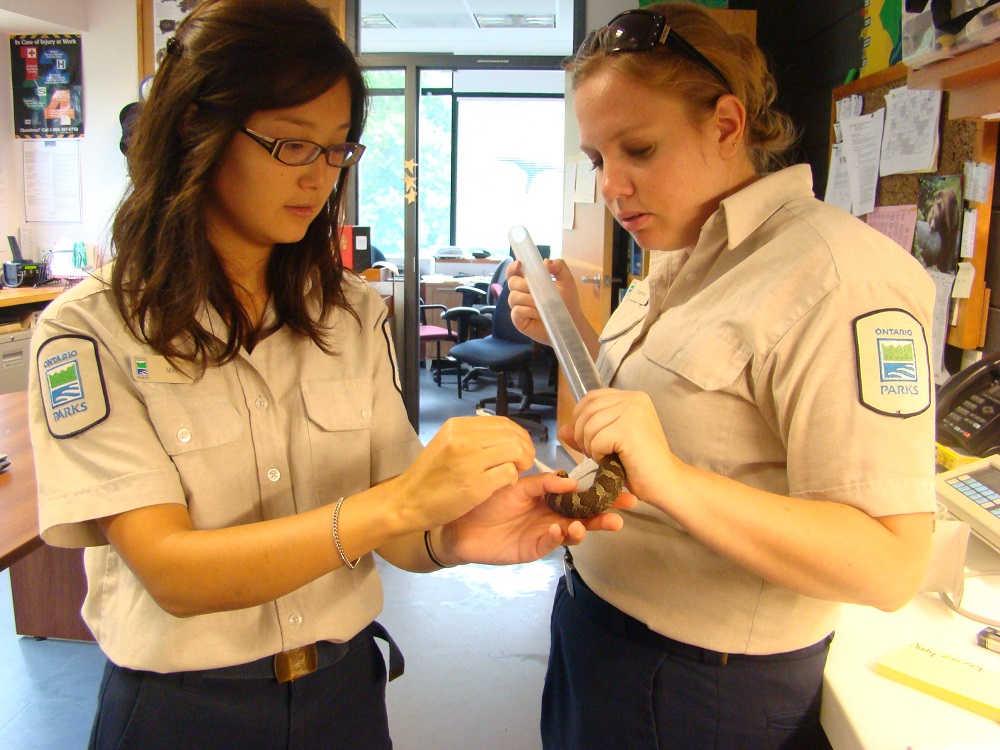
We’ll come to you and catch the snake. If it’s never been caught before, we will microchip it, record its sex, weight, and blotch pattern, and release it back into the park as a brand-new member of our research study!
Learn more about rattlesnakes and educate others. Reading this blog is a great start! Be sure to share what you’ve learned with your friends and family – rattlesnakes need our understanding. The next time you visit the Discovery Centre at Killbear, ask one of our friendly naturalists to tell you more about rattlesnakes.
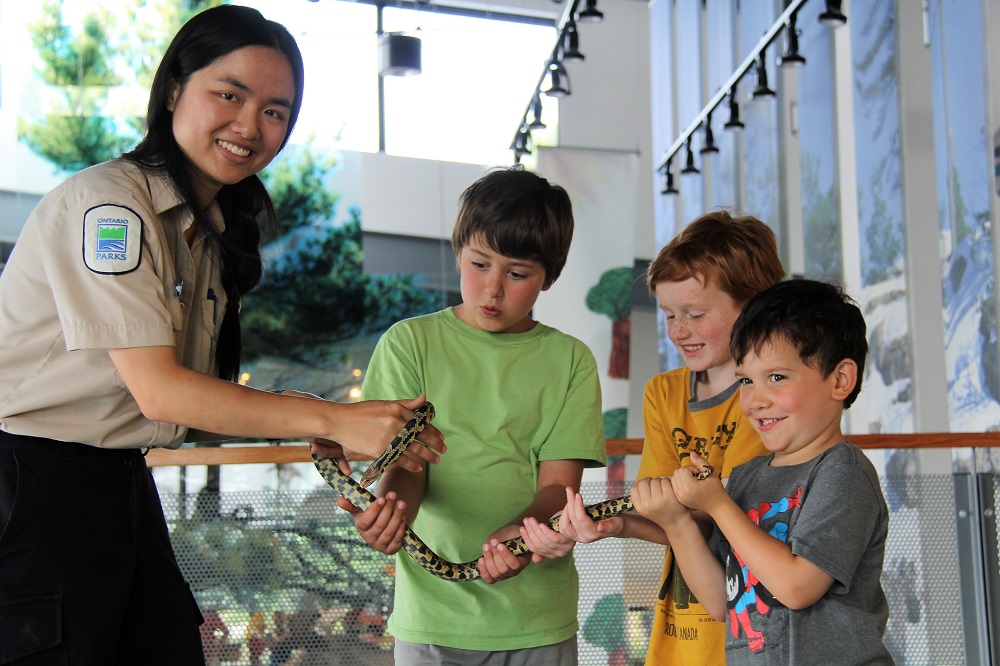
Consider donating to the Friends of Killbear. They contribute to our snake research efforts and their financial support is critical for the future of rattlesnakes at Killbear.
Massasauga Rattlesnakes are a unique species in Ontario. Through our efforts at Killbear and other provincial parks, we can keep them around for future generations to appreciate.
This is the third edition of our 2023 species-at-risk series.
Read our previous edition: The flight of the Prothonotary Warbler.
